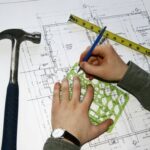Home brewing is a beloved hobby for many beer enthusiasts, offering the opportunity to craft their own unique flavors and styles. However, one key aspect that separates a good brew from an exceptional one is home brew efficiency. In this article, we will explore the importance of improving efficiency in home brewing and how it can lead to better results.
Home brew efficiency refers to the ability to extract sugars from grains during the brewing process. The more efficient this process is, the more fermentable sugars are obtained, resulting in higher alcohol content and better flavors. By improving efficiency, home brewers can achieve their desired beer characteristics more consistently.
Improving efficiency in home brewing is not just about producing stronger beers; it also contributes to overall quality. Higher efficiency allows for better control over flavor profiles, clarity, and consistency from batch to batch.
Whether you are a novice or experienced home brewer, understanding and enhancing efficiency can elevate your brewing skills to new heights. From selecting the right ingredients to mastering mash techniques and optimizing equipment, there are various factors that influence home brew efficiency, all of which will be explored in detail throughout this article.
Understanding the Basics
To improve home brew efficiency, it is crucial to understand the factors that can affect this aspect of brewing. One essential factor is grain mashing and conversion. During this process, the enzymes in the grains break down starches into fermentable sugars that yeast can consume.
Achieving high efficiency in grain mashing requires understanding the proper temperature and time parameters for achieving optimal starch conversion. It is also important to consider pH levels during the mash, as enzymes work best within a specific pH range. Monitoring and adjusting pH levels can help ensure better efficiency in this crucial step.
Apart from grain mashing, water quality also plays a significant role in home brew efficiency. Water hardness, mineral content, and pH levels can all impact the effectiveness of enzymatic activity during mashing and affect overall brewing efficiency. It is recommended to use water with balanced mineral content for home brewing purposes. If your local water has high or low mineral content, adjusting it with brewing salts or additives can help optimize efficiency.
To further enhance home brew efficiency, selecting the right ingredients is key. When choosing grains and malts, opt for those with high enzymatic potential to aid in starch conversion. Additionally, some adjuncts like rice or corn can contribute readily fermentable sugars without affecting flavor too much. Consider experimenting with different yeast strains as well since certain yeast strains may perform better in terms of fermentation efficiency compared to others.
By understanding these basics of what affects home brew efficiency – grain mashing and conversion, water quality, and ingredient selection – enthusiasts can lay a solid foundation for improving their brewing results beyond measure. These fundamentals will not only enhance the taste and quality of their homemade beers but also allow them to unlock new flavors and styles that were previously inaccessible due to subpar efficiency levels”.
Choosing the Right Ingredients for Better Efficiency
One of the key factors that can significantly impact home brew efficiency is the choice of ingredients. By selecting the right grains, malts, and adjuncts, brewers can optimize their efficiency and achieve better results in their brewing process.
When it comes to grains, it is important to choose high-quality ingredients that have been properly stored and milled. Look for fresh grains that are free from any signs of spoilage or damage. The freshness of the grain can directly affect its ability to convert starches into fermentable sugars during the mash process, which in turn affects overall efficiency.
In addition to choosing quality grains, selecting specific malt types can also contribute to improved efficiency. Different malts have varying levels of enzymatic activity and fermentability. Brewers should consider using malts that have a high enzymatic activity and good diastatic power, as they help convert starches into sugars more efficiently.
Apart from grains and malts, understanding how different yeast strains affect home brew efficiency is crucial. Some yeast strains are better at attenuating sugars and fermenting them completely than others. By choosing a yeast strain with higher attenuation properties, brewers can ensure a more complete conversion of sugars, leading to increased efficiency.
| Grain | Diastatic Power (Lintner) |
|---|---|
| Pale Ale Malt | 40-160 |
| Pilsner Malt | 100-200 |
| Munich Malt | 20-60 |
| Vienna Malt | 50-60 |
| Crystal Malt | N/A |
By carefully selecting the right ingredients, home brewers can significantly improve their efficiency and achieve better results in their brewing process. The freshness and quality of grains, as well as the choice of specific malts and yeast strains, all play a crucial role in optimizing efficiency and creating exceptional home brews.
Improving Mash Techniques for Higher Efficiency
One of the key factors that can greatly impact home brew efficiency is the mash process. A successful mash is essential for converting grain starches into fermentable sugars, and there are several techniques that can be employed to achieve higher efficiency.
One common and straightforward method is the single-infusion mash. This involves adding hot water to the grains at a specific temperature range (around 148-156°F) and allowing it to rest for a predetermined amount of time.
The infusion temperature plays a crucial role in activating enzymes that break down complex starches into simple sugars, allowing for better extraction during lautering. It is important to monitor the temperature closely using a reliable thermometer, as small variations can have a significant impact on the conversion rate.
Another technique that brewers can experiment with is step mashing. Step mashing involves gradually raising the temperature of the mash to different levels by adding hot water or applying heat. Each step activates different enzymes responsible for breaking down specific types of starches, resulting in an enhanced extraction of fermentable sugars. Using multiple rests at precise temperatures can lead to more efficient conversion and improved overall efficiency.
For those looking to elevate their home brewing game even further, decoction mashing is an advanced technique worth exploring. This traditional European method involves removing a portion of the thick, boiling mash and heating it separately before returning it to raise the overall temperature of the main mash. Decoction mashes are known for producing rich malt flavors and achieving high levels of extract efficiency.
To optimize mash techniques for higher efficiency, it’s important to consider not only the chosen method but also factors such as grain-to-water ratio, stirring frequency, and pH levels during mashing. These parameters can greatly affect enzyme activity and overall performance during conversion. Experimentation with different techniques and careful monitoring of variables will help home brewers find their ideal balance between ease-of-use and maximum efficiency in their mash process.
Enhancing Sparging Methods for Improved Efficiency
Sparging, the process of rinsing the grains after mashing to extract as much sugar as possible, is an essential step in improving home brew efficiency. In this section, we will explore different sparging methods and provide a step-by-step guide to help home brewers achieve higher efficiency while minimizing wastage.
Introduction to Different Sparging Methods
There are several sparging techniques that brewers can utilize to enhance their brewing efficiency.
One common method is batch sparging, which involves adding a specific volume of hot water to the mash tun, stirring it well, and then allowing it to sit for a designated time. Afterward, the liquid is drained off into the kettle or boiler for boiling. Batch sparging is popular among home brewers due to its relative simplicity and efficiency.
Fly sparging is another technique that requires constant addition of hot water during draining to maintain a consistent flow rate. This method allows for continuous extraction of sugars from the grain bed, maximizing yield. However, fly sparging may require additional equipment such as a sparge arm or rotating spray ball system.
For those looking for a simpler approach with less equipment required, no-sparge brewing is an option worth considering. In this method, all of the desired volume of wort is collected in one batch instead of draining multiple times. While this technique may result in slightly lower overall efficiency compared to other methods, it can save time and effort for home brewers.
Step-by-Step Guide to Successful Sparging
To maximize home brew efficiency during sparging, it’s important to follow a consistent and precise process. Here’s a step-by-step guide:
- Check Mash Conversion: Before starting the sparge process, ensure proper conversion by conducting an iodine test or monitoring the pH levels.
- Vorlauf: Begin by gently collecting wort from your mash tun until it runs clear without any grain sediment. It helps to recirculate this initial collection back into the set mash tun.
- Sparge Water: In batch sparging, add the calculated volume of hot water based on your recipe to raise the liquid level above the grain bed. Stir well and let it rest for about 10-15 minutes before draining.
- Sparging Techniques: For fly sparging, maintain a consistent flow rate by continuously adding hot water while draining the wort. Adjusting the flow rate based on gravity readings can help achieve higher efficiency. With no-sparge brewing, simply collect all desired wort volume in one batch after mashing is complete.
- Wort Collection: Collect the sparged wort in your kettle or boiler for boiling, ensuring that you capture as much sugar as possible without over-draining and extracting harsh tannins from the grain bed.
By mastering sparging techniques and following a precise process, home brewers can greatly improve their brewing efficiency and ultimately produce better-tasting beers with higher yields.
Mastering Your Equipment
When it comes to home brewing, the equipment you use plays a crucial role in achieving optimal efficiency and ultimately, better results. In this section, we will explore some useful tips and techniques to help you master your equipment for improved brewing efficiency.
Calibrating your thermometer and hydrometer for accurate readings
Accurate temperature readings are essential in the brewing process as they affect mash conversion rates and enzyme activity. It is important to calibrate your thermometer regularly to ensure precise temperature measurements. One simple way to do this is by using the ice bath method. Fill a glass with crushed ice and add water until it reaches the brim.
Stir well and let it sit for a few minutes. Insert your thermometer into the mixture without touching the sides or bottom of the glass. The temperature should read 32°F (0°C). If it doesn’t, make note of the difference and apply a correction factor when taking measurements during brewing.
Similarly, having a properly calibrated hydrometer ensures accurate gravity readings which are crucial in determining the progress of fermentation and calculating alcohol content. To calibrate your hydrometer, fill a cylinder with distilled water at room temperature and float the hydrometer in it. The reading should be zero or close to it. If there is any deviation, adjust future measurements accordingly.
Evaluating and optimizing your brewing equipment for maximum efficiency
Take some time to evaluate your brewing equipment as even small adjustments can significantly impact efficiency. Start by ensuring that all seals on your equipment are tight to minimize heat loss during mashing and boiling. Consider upgrading any worn-out parts like o-rings or gaskets that can cause leaks or inefficiencies.
Additionally, assess the size of your brew kettle in relation to batch size. Using an oversized kettle can result in increased evaporation rates leading to concentration issues while an undersized kettle may not accommodate your entire recipe comfortably. Finding the right balance will contribute to better brewing efficiency.
Using a HTML table to display relevant data
| Equipment | Tips for Maximum Efficiency |
|---|---|
| Thermometer | Regularly calibrate using the ice bath method for accurate temperature readings. |
| Hydrometer | Calibrate in distilled water to ensure precise gravity measurements. |
| Brewing Equipment | Evaluate and repair any leaks or worn-out parts. Consider the size of your brew kettle in relation to batch size. |
By mastering your brewing equipment and ensuring it operates optimally, you can enhance the efficiency of your home brewing process. Calibrating your thermometer and hydrometer, evaluating and optimizing your equipment, and making necessary adjustments will all contribute to achieving better brewing results. Take the time to fine-tune your setup, as even small improvements can make a significant difference in overall efficiency.
Water Chemistry
Water chemistry plays a crucial role in the brewing process and can significantly impact home brew efficiency. Understanding the importance of proper water treatment and implementing methods to adjust water pH and mineral content can unlock higher efficiency and improve the overall quality of your homebrew. Here are some tips to help you optimize your water chemistry for better efficiency:
- Adjusting Water pH: pH levels can greatly affect enzymatic activity during mashing, which directly impacts the conversion of starches into fermentable sugars. The ideal pH range for mashing is typically between 5.2 and 5.To achieve optimal pH, you can use additives such as acidulated malt, food-grade acids like lactic acid or phosphoric acid, or even filtered water with naturally appropriate pH.
- Mineral Content: Different minerals in water, such as calcium, magnesium, and sulfate, can influence various aspects of the brewing process. For example, calcium helps with enzyme function during mashing while sulfate affects hop bitterness perception. Testing and adjusting mineral content using brewing salts or commercially available water treatment products can help fine-tune your water profile to suit different beer styles and improve efficiency.
- Additives for Efficiency: There are specific additives that are known to enhance efficiency by improving enzymatic activity or promoting better yeast health. Examples include enzymes like amylase or protease that aid in starch conversion or yeast nutrients like yeast hulls or zinc additions that support fermentation vigor. Check with your local homebrew supply store or online resources for recommended additives based on your specific brewing goals.
It’s important to note that the composition of tap water varies significantly depending on your location, so understanding basic water testing techniques and utilizing tools like a digital pH meter or test strips will play an essential role in optimizing your home brew efficiency through proper water treatment.
By paying attention to water chemistry and implementing appropriate adjustments, you can unlock higher efficiency in every step of the brewing process, resulting in exceptional home brews.
Recipe Design
When it comes to improving home brew efficiency, recipe design plays a crucial role. Designing a well-crafted recipe tailored for higher efficiency can significantly impact the outcome of your home brewing endeavors. By carefully considering factors such as the grain bill, mash schedule, and yeast selection, you can optimize efficiency and achieve better brewing results.
The first step in crafting an efficient home brew recipe is selecting the right grains, malts, and adjuncts. It’s important to choose high-quality ingredients that will extract maximum flavors and sugars during the brewing process. Opt for well-modified malts with good enzyme content to ensure efficient conversion of starches into fermentable sugars. Additionally, incorporating a small percentage of highly fermentable adjuncts like rice or corn can boost overall efficiency by increasing sugar yield.
Another aspect to consider when designing an efficient recipe is yeast selection. Different yeast strains have varying levels of attenuation and flocculation, which can influence overall fermentation efficiency. Research and experiment with different yeast strains to find one that best suits your desired flavor profile while also facilitating optimal fermentation and attenuation rates.
In addition to ingredient selection, it’s important to utilize brewing software to calculate and optimize efficiency for better results. Brewing software like BeerSmith or Brewer’s Friend allows you to input your recipe ingredients and measurements and provides calculations for estimated mash efficiency, boil-off rate, trub loss, and more. By utilizing these tools, you can fine-tune your recipes based on predicted efficiencies before even starting the brewing process.
By carefully crafting efficient home brew recipes through thoughtful ingredient selection, yeast choice, and utilizing brewing software for calculations and optimizations, you increase your chances of achieving higher brewing efficiency in every batch you make. With a well-designed recipe in hand, you’ll be on your way to creating exceptional home brewed beer that stands out in both flavor and quality.
Troubleshooting Efficiency Issues
Identifying Efficiency Issues in Home Brewing
One of the most frustrating challenges that home brewers may face is low efficiency in their brewing process. Low efficiency can result in lower alcohol content, poor flavors, and a less satisfying beer overall. To troubleshoot efficiency issues, it is important to identify the common problems that can occur during the brewing process.
One common issue that can affect efficiency is improper grain milling. If the grains are not milled properly, it can have a significant impact on the extraction of sugars during the mash process. Grains that are not effectively crushed may not release their starches and enzymes fully, leading to low conversion rates and reduced efficiency.
Another potential problem is inadequate sparging techniques. Sparging is the process of rinsing the grains with hot water after mashing to extract as much sugar as possible. Insufficient or incorrect sparging methods can result in inadequate sugar extraction from the grains and ultimately lower brewing efficiency.
Solutions for Improving Efficiency
To address these common problems, there are several steps that home brewers can take to improve their brewing efficiency.
Firstly, ensuring proper grain milling is essential. Investing in a good quality grain mill or utilizing your local homebrew supply store’s milling services can help achieve consistent crush size and optimize sugar extraction during mashing.
Secondly, improving sparging techniques can contribute significantly to enhancing brewing efficiency. Batch sparging involves adding all hot water needed for rinsing at once, allowing for more thorough sugar extraction. Fly sparging involves slowly adding hot water while draining out liquid simultaneously, optimizing sugar removal from the grains.
No-sparge brewing eliminates traditional sparging altogether by using a higher ratio of water-to-grain initially. Experimenting with different methods and finding what works best for your setup can go a long way in improving your overall brewing efficiency.
Furthermore, maintaining accurate temperature control throughout the mash process is crucial. Fluctuations in temperature can impact enzymatic activity and the conversion of starches into fermentable sugars. Using a reliable and calibrated thermometer, along with employing various heating methods such as direct heat or infusion, can help achieve optimal temperatures for maximum efficiency.
Conclusion
In conclusion, improving home brew efficiency is essential for achieving outstanding brewing results. Throughout this article, we have explored various aspects that impact efficiency and discussed strategies to enhance it at each stage of the brewing process.
Understanding the basics, such as the role of grain mashing and conversion, pH levels, and water quality, lays the foundation for optimizing efficiency. By selecting the right ingredients and yeast strains, home brewers can further improve their outcomes. Additionally, mastering mash techniques and enhancing sparging methods contribute to higher efficiency and minimize wastage.
To truly embrace efficiency in home brewing, it is crucial to evaluate and optimize your equipment, calibrate your thermometer and hydrometer for accurate readings, and understand water chemistry’s impact on brewing efficiency. Crafting recipes tailored for higher efficiency and troubleshooting any issues that arise during the brewing process are also key steps in achieving exceptional home brewing results.
By incorporating these strategies into your home brewing practices, you will be able to take your beer-making skills to new heights. Embracing efficiency not only leads to better taste but also provides a sense of accomplishment as you witness consistent improvements in your brews. So go ahead, apply these principles in your next batch, and embark on an exciting journey toward exceptional home brewing. Cheers.
Frequently Asked Questions
How can I improve my beer efficiency?
One way to improve beer efficiency is by ensuring you have a proper crush on your grains. The grind of the grains plays a crucial role in extracting sugars during the mashing process. It’s important to aim for a consistent and fine grind size, allowing for maximum contact with the hot water and enzymes.
Additionally, controlling the temperature and pH levels during the mashing process can also help increase efficiency. Maintaining an optimal mash temperature typically between 148-158°F (64-70°C) and adjusting the pH within the desired range (usually around 5.2-5.4) can enhance enzyme activity and sugar extraction.
What is the best efficiency for homebrew?
The best efficiency for homebrewing depends on various factors, including personal preferences and equipment limitations. However, achieving an overall brewhouse efficiency (the measure of how effectively you extract sugar from your grains into your final product) of about 75-85% is considered excellent for most homebrewers.
While it is possible to achieve higher efficiencies, it often requires more advanced techniques or specialized equipment not commonly found in homebrew setups.
Why is my mash efficiency low?
Low mash efficiency can have several causes, with some common culprits being improper grain crush, inadequate mash thickness/water-to-grain ratio, or insufficient sparging techniques. If your grains are not crushed finely enough or inconsistently crushed, it can result in reduced sugar extraction during mashing. Similarly, using too much or too little water compared to the amount of grains being mashed can affect enzyme activity and hinder proper conversion of starches into sugars.
Inadequate sparging techniques such as rinsing the grains with water that is too hot or not rinsing thoroughly enough can leave behind significant amounts of fermentable sugars trapped in the grain bed, leading to low efficiency. Other variables like water quality, temperature control issues, and inaccurate measurements could also contribute to poor mash efficiency and should be evaluated if low efficiency persists despite addressing these common causes.

I’m thrilled to have you here as a part of the Remodeling Top community. This is where my journey as an architect and remodeling enthusiast intersects with your passion for transforming houses into dream homes.





